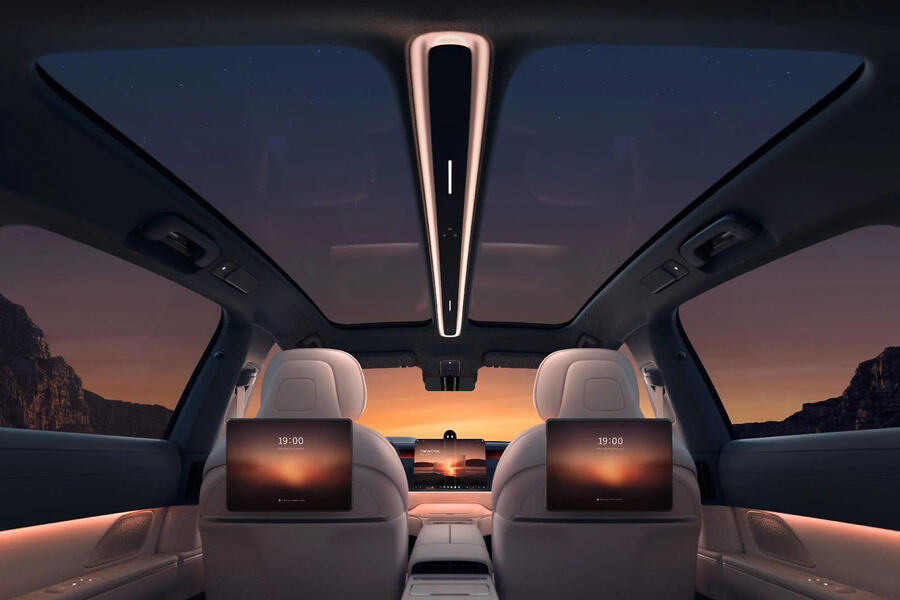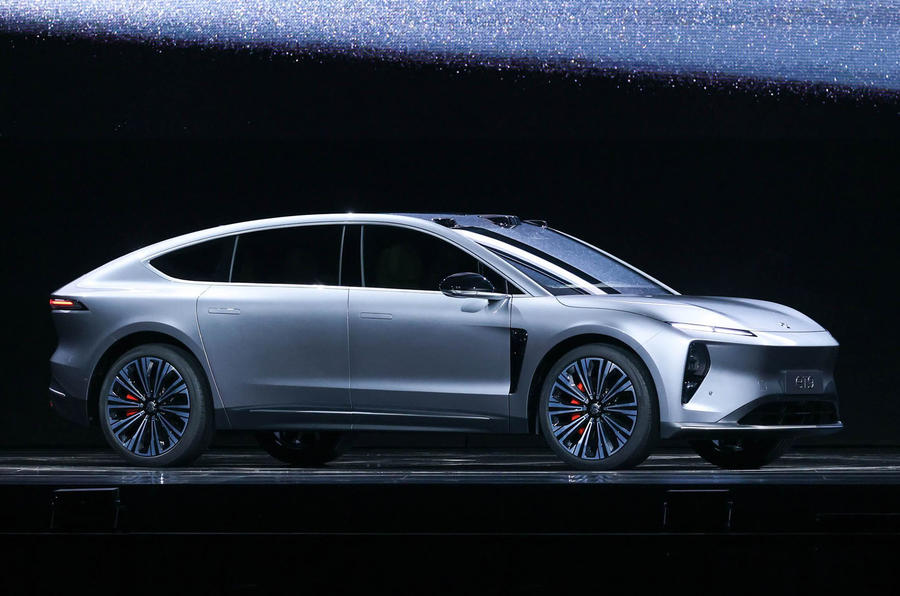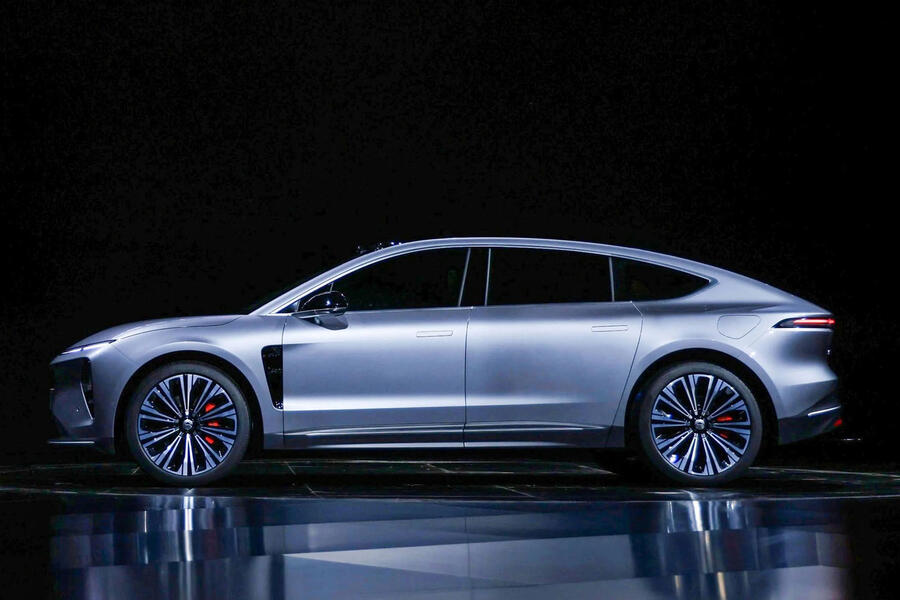Nio will rival Mercedes-Benz’s upmarket Maybach brand with the ET9, its new flagship coupe-crossover arriving in 2025.
The dual-motor four-wheel drive car acts as a technological showcase for Nio’s electric platform and drivetrain and sets new standards of efficiency, luxury, space and safety for production electric cars, said CEO William Li.
Launching in its home market at the start of 2025, the RMB800,000 (£88,800) ET9 is not only Nio’s most advanced but also its most expensive model to date.
It’s also its largest, too, with a length of over 5300mm, width of 2016mm and height of 1620mm making it over 199mm longer, 29mm wider and 115mm higher than the Nio ET7 saloon launched in 2022.
Riding on the largest version of Nio’s new ET3 electric car platform, it has an ultra-long wheelbase of 3250mm, some 190mm longer than that of the ET7 saloon.
During the presentation of the ET9 at the brand’s annual Nio Day in Xi’an, China, Li referenced the Mercedes-Maybach S-class, Audi A8, BMW 7-series and Porsche Panamera, providing an insight into the sort of luxury car competition the new Nio model is aiming to unseat.
Li describes the ET9 as a “landjet” – a term first coined by Audi for a futuristic electric concept unveiled in 2020. It combines the lines of a traditional saloon with those of a modern-day SUV and rides on wheels up to 23-inch in diameter, and with up to 200mm of ground clearance.
Inside, the bold crossover receives a luxurious cabin with seating for four in a two-plus-two layout. The rear seats have been developed specifically for the ET9 and offer 18-way electric adjustment together with a reclining function, giving a seat back angle as low as 45 degrees. A pair of 14.5-inch OLED are also attached to the rear of the front seats.






Join the debate
Add your comment
There really is nothing new in car design at the moment, outside or in.
About as novel as a bag of frozen Peas.